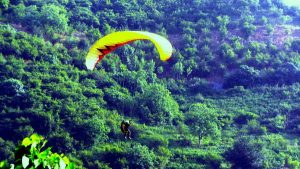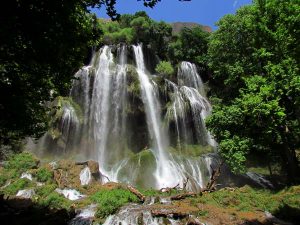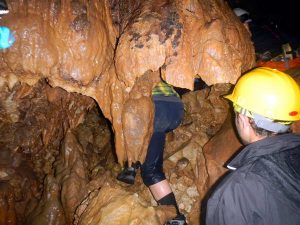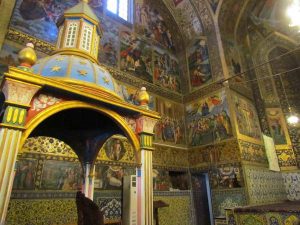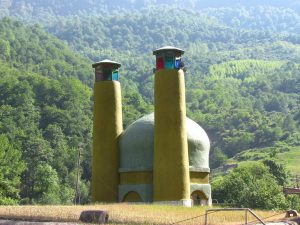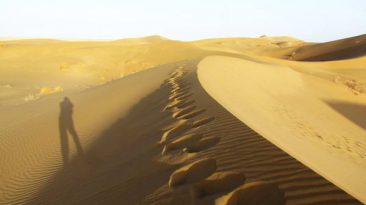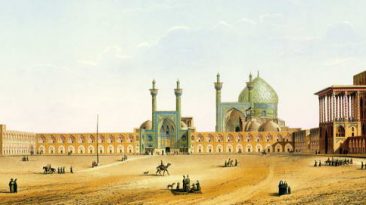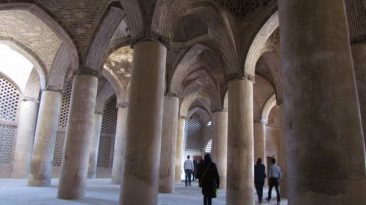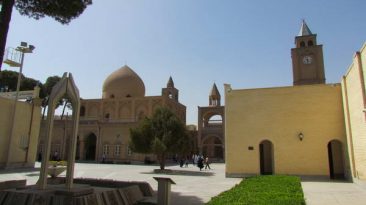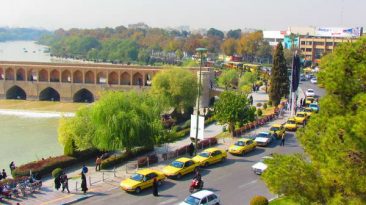In this two-day tour, we move from Isfahan to Yazd. On the way, we will visit historical Jameh Mosque of Naein and The Narin Castel and other historical monuments of Meybod, Then we go to visit Chak Chak, a Zoroastrian shrine in the east of Ardakan.
Then we go to Yazd and visit the Zoroastrian fire temple and the historical monuments such as Amir Chakhmaq historical complex, Panj Badgiri reservoir and Zurkhaneh, Historical Khan Bath in the old part of Yazd. We spend the night in a traditional hotel. We will end our tour of desert cities and Zoroastrian monuments by visiting Dowlat Abad Garden and the Towers of Silence (a special cemetery of Zoroastrains).
Historical Jameh Mosque of Naein
Naein, 140 kilomete east of Isfahan is a city on the edge of the desert that is 3000 years old. The historical Jameh mosque of Naein is 1200 years old and was one of the first mosques built in Iran. You can not find similar to Historical Jameh Mosque of Naein in terms of architecture anywhere in Iran.
The naves are located on three sides of the courtyard of the mosque and have thick columns close to each other, in the shape of forty columns. The altar of this mosque has historical plaster casts from the Al-Buyeh period and its wooden pulpit belongs to seven hundred years ago. The basement or underground nave of the mosque is actually a large hand-made cave under the courtyard of the mosque.
The Historical Jameh Mosque of Naein has no dome and has only one minaret. Forty columns around the courtyard of the mosque are decorated with prominent brickwork. Remains of quadrangles from the Sassanid period can be seen in a corner of the mosque courtyard, so some believe that this mosque was built on the remains of a fire temple of the pre-Islamic period.
Google map link of Historical Jameh Mosque of Naein
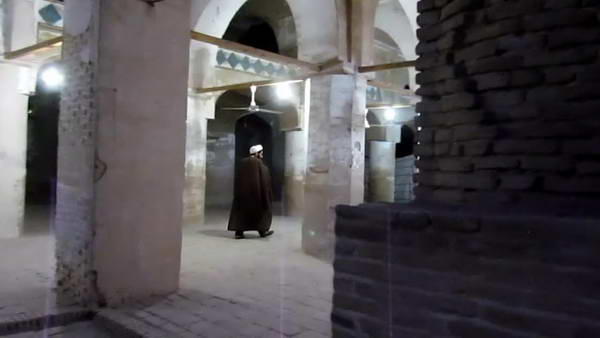



Historical Jameh Mosque of Naein
Narin Castle (Qaleh), Meybod
Narin Qaleh is a historical and large castle with several floors, which is located on a hill in the center of Meybod, in Yazd Province. Narin Castle of Meybod is said to be so old that it was the first center of human settlement in ancient times, or it is a legend that Suleiman the prophet hid his treasures in this castle.
An old half-human, half-animal painting found on a piece of pottery in Narein Castle of Meybod shows that this castle belongs to the civilization of three thousand years BC.
But what is almost certain is that this castle existed in the Sassanid and Parthian periods and then in the period of Al-Muzaffar in the eighth century AH, reconstructions have been done in it. During the Sassanid period in the city of Meybod, coins were minted.
A moat has been dug around Narein Castle, Meybod. It is said that numerous underground roads have been dug from under this castle to the inside of Meybod city. All this has made it impossible for the enemies to ever conquer this fortress.
Google map link of Narin Casle, Meybod
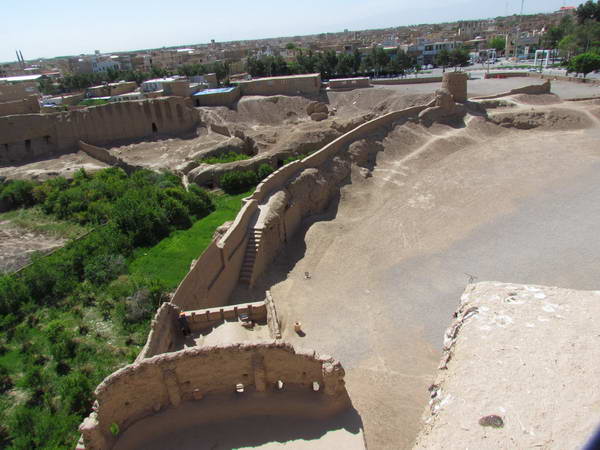



Narin Castle (Qaleh), Meybod
Historical Cmplex of Meybod
Meybod is a city in Yazd province which has a history of several thousand years. Narin Qaleh Meybod is a historical castle related to the Sassanid period. In addition, in the historical context of Meybod, some historical monuments related to the Safavid period are located close to each other. This historical complex of Meybod includes a large caravanserai, a Chapar Khaneh (post system by horsemen), a historic reservoir with its windcatchers, as well as a very large brick Ice House (a hand-made glacier system).
Shah Abbasi Caravanserai of Meybod Historical Complex is a large caravanserai with a porch in the middle of the courtyard. Under the porch there is a small pool around which there are platforms for sitting and resting. Some of the rooms around the inn are dedicated to the supply and sale of Meybod handicrafts, such as Zillow and glazed dishes.
The brick Ice house of this historic complex is a very large hollow pit covered by a tall dome. In winter, this large hole was filled with a lot of ice to reserve and provide ice consumption to the people of Meybod in summer. The lofty dome of this handmade glacier and the small vent at the top of the dome caused all the heat of the glacier to be directed upwards and out, leaving the glacier always cold.
Google map link of Shah Abbasi Caravanserai, Meybod
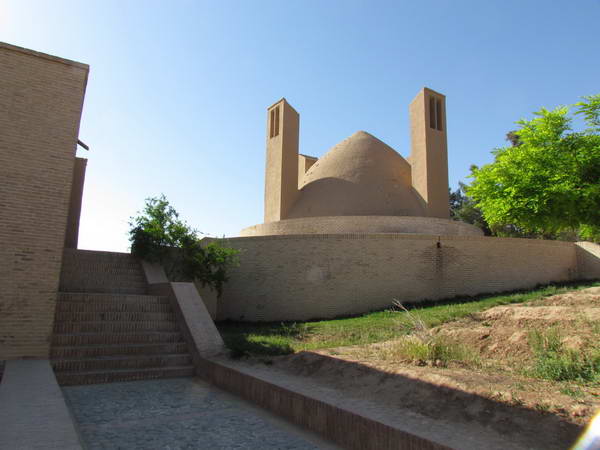
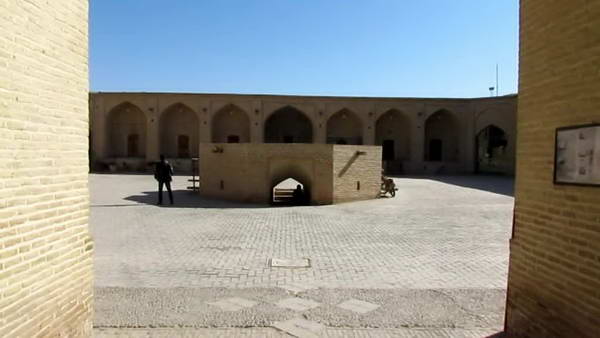
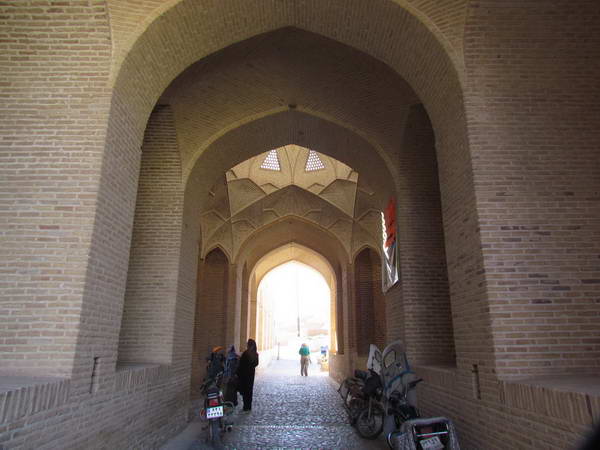

Historical Cmplex of Meybod
Chak Chak Zoroastrian Shrine
There is a shrine for Zoroastrians In the desert mountains of Yazd province 35 km east of Ardakan, which is known as the shrine of Pir-e Sabz or Chak Chak. This shrine is in a shallow cave at the foot of the mountain, from the roof of which water falls in the form of drips, hence this place is named as Chak Chak, that means drop by drop.
The reason for choosing this place as a Zoroastrian shrine is due to the memory of the Sassanid princess named Nik Banoo, the daughter of Yazdgerd III, who took refuge in this place to escape from the Arabs. Every year from June 13 to 17, Zoroastrians gather in this place, and of course, apparently at that time, visiting this shrine will be forbidden for tourists.
Google map link of Chak Chak Zoroastrian Shrine




Chak Chak Zoroastrian Shrine
Zoroastrian fire temple of Yazd
The Zoroastrian fire temple of Yazd, the place where their sacred fire is kept, are now welcomed by tourists all day long as one of the main tourist places in Yazd. Basically, we all like to get acquainted with the religion of Zoroaster, the religion of the Iranians before Islam. Therefore, wherever there is a tourism attraction related to Zoroaster, it usually has a lot of tourists.
A beautiful circular pool in front of the fire temple mansion and in the middle of a relatively large courtyard has added to the beauty of this building.
The vast and beautiful inscription at the entrance of the fire temple mansion consists of Farvahar’s figure with the words “good thought”, “good speech” and “good deed”, which are engraved on azure tiles in the field of brick designs. Four stone pillars hold this inscription and create a porch path to enter the hall inside the fire temple. Wide stone stairs in front of the porch have added to the beauty of this mansion.
The interior of the main hall of the fire temple looks like a simple hall. Numerous banners are displayed to introduce the religion of Zoroaster and its history around the hall. The sacred fire is inside a bronze chamber behind a glass shield in a part of the hall. In addition to the main hall of the fire temple, a smaller hall is located in another part of the courtyard, which also introduces the symbols of the Zoroastrian religion
Google map link of Zoroastrian fire temple of Yazd




Zoroastrian fire temple of Yazd
Historical Khan Bath, Yazd
Khan Bath is one of the most beautiful historical baths in Yazd. This bath, which was built two hundred and thirty years ago, has now been beautifully renovated and is a traditional restaurant for tourists.
The beautiful combination of azure color of the tiles and the glory of bathroom pool is nothing less than the stylish view of the modern pool and Jacuzzi, with the difference that the columns and the arch ceiling of the bath show its traditional architecture. In this old building, the utmost good taste has been used in the reconstruction to create a visual beauty and to prepare a pleasant environment for the restaurant.
In addition to using tables and chairs, you can sit and relax on the spacious porches around the bathroom.
Google map link of Khan Bath, Yazd
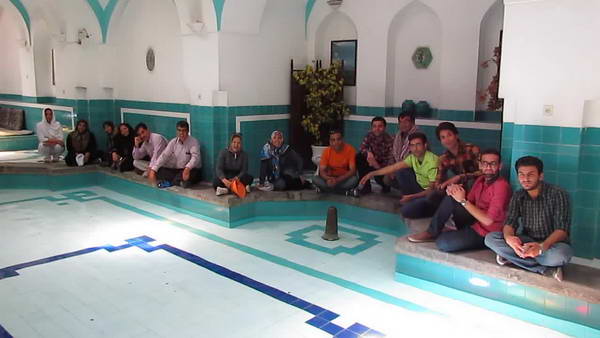

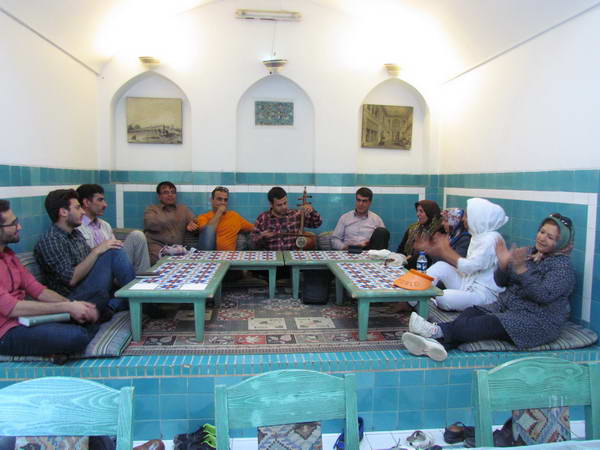

Historical Khan Bath, Yazd
historical context of Yazd
For me, Yazd like other tourists, was attractive in terms of visiting historical monuments and staying in the pleasant and relaxing environment in the old and traditional houses of this city. The historical context of Yazd consists of several neighborhoods, streets, alleys and bazaar adjacent to each other, which has many historical monuments and old houses in a centralized manner.
Demolition of residential houses in the old part of Yazd is prohibited, and old houses in this area are only allowed to be renovated so that they can be used as traditional residences or handicrafts shop.
The historical context of Yazd provides a very pleasant and relaxing environment for domestic and foreign tourists. In the alleys of the historical context of Yazd, you will see many foreign tourists who are walking around and visiting different places of these neighborhoods.
In terms of the density of foreign tourists, perhaps none of the cities in Iran can reach Yazd.
Among the many historical monuments in the historical context of Yazd, we can mention Amir Chakhmaq Square & Historical Complex, Panj Badgiri reservoir and Zurkhaneh, Jame Mosque, Bazaar & Hammam Khan, Dolatabad Garden and Zoroastrian Fire Temple.
Google map link of the historical context of Yazd
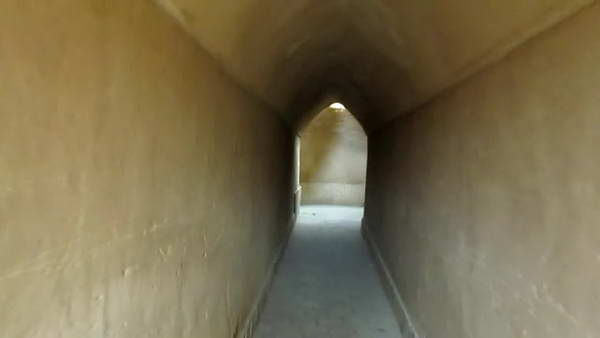
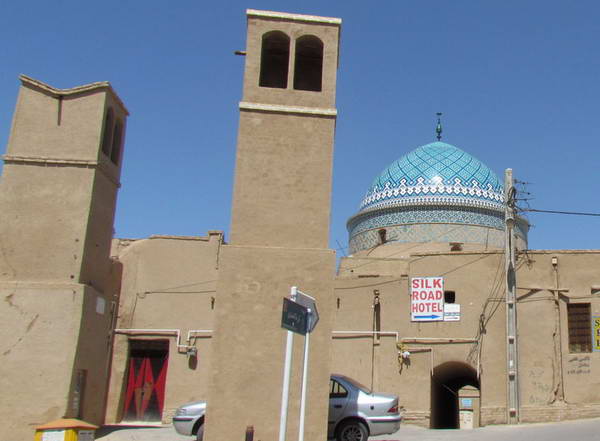


historical context of Yazd
Amir Chakhmaq Square and Historical Complex
Amir Chakhmaq Square in the historical context of Yazd has become the main symbol of this city. That is, by the name of Yazd, the high wall of Amir Chakhmaq with its minarets comes to mind.
But is the Amir Chakhmaq building a historical mosque or something like Hoseinieh? The mosque-like mansion and the minarets of Amir Chakhmaq, which are only 130 years old, are nothing but a wall built in the style of historic mosques, but of course it is not a mosque.
Amir Chakhmaq was one of the rulers of the Timurid government who, together with his wife Seti Fatemeh, built a hoseinieh with a mosque and water reservoir in this part of Yazd seven hundred years ago. The tomb of Seti Fatemeh is now located in a side of this square in front of Panj Badgir water reservoir.
But the current wall of Amir Chakhmaq mansion was actually built in the Qajar period instead of the northern wall of the previous Hoseiniyah, and that Hoseiniyah has now become a square known as Amir Chakhmaq Square and is the center of religious mourning ceremonies in Yazd.
Google map link of Historical Amir Chakhmaq complex




Amir Chakhmaq Square and Historical Complex
Panj Badgiri reservoir and Zurkhaneh
One of the attractions of Amir Chakhmaq historical cmplex in Yazd is a water reservoir and a Zurkhaneh (a place for ancient sports). There are five windcatchers on above the water reservoir that can be seen from Amir Chakhmaq square. Although the construction of this water reservoir is attributed to Amir Chakhmaq and the Timurid period, but apparently it was built in the Safavid period.
Recently, with the creation of an additional flat roof, the upper space of the dome of this reservoir has been separated from the bottom part of reservoir, and been dedicated for a zurkhaneh (The place for performing ancient sports).So tourists can visit the ancient sports in the Zurkhaneh area, and meantime by entering the beautiful stairs and corridors below, which revolve around the water reservoir, they will go down to the space of the water reservoir floor.
The ancient sport program in this zurkhaneh, which is performed every day at sunset, is extremely attractive to tourists.
Tourists sit on the platforms around the circular pit of the Zurkhaneh and watch the beautiful and active performance of this sport by the youth and heroes of Yazdi and listen to the epic song of Morshed songer and his drum. Usually, this zurkhaneh is full of tourists and spectators every day.
Google map link of Panj Badgiri water reservoir and Saheb Al-Zaman Zurkhaneh
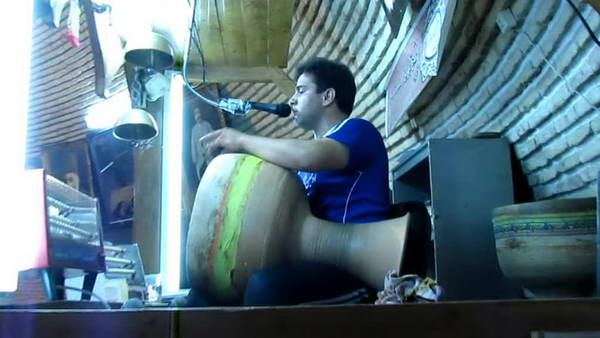
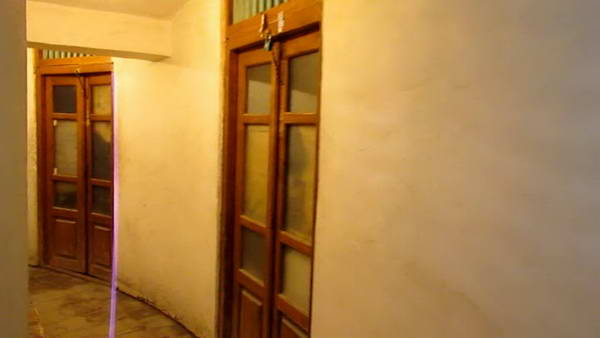


Panj Badgiri reservoir and Zurkhaneh
Dowlat Abad Garden
One of the most beautiful and largest Persian Gardens registered in UNESCO is Dowlat Abad Garden, which is located near historical context of Yazd. A seven-hectare garden with a lot of purity and freshness. A garden whose water comes here from a 65 km long aqueduct originate from Mehriz.
Dowlat Abad Garden was built about 280 years ago, at the end of the Afshari period, by the then ruler of Yazd named Mohammad Taghi Khan Bafghi. He lived in the main part of the garden (inner mansion) and Simultaneously he could use the office adjacent to the garden (outer mansion) for government affairs.
Dowlat Abad Garden has a high octagonal windcatcher, which is the tallest brick windcatcher in the world with a height of about 34 meters.
Inside the mansion in the middle of Dowlat Abad Garden, you can see the stunning beauty of the design, architecture and glitter. The royal residence is again in the form of an octagon with a pool in the middle. Around the royal residence are the rooms with sash doors and colorful glass with stunning colors.
Another room that leads to the royal residence is the windcatcher room, which is located under the huge windcatcher tower of this building. Under the cool breeze that flows downward you feel like a strong air conditioner. From here, the wind blows into the royal residence and the rest of the adjoining rooms, keeping the whole mansion cool in summer. Especially that by passing on the water of the ponds inside the mansion, the wind becomes cooler and more pleasant.
Google map link of Dowlat Abad Garden




Dowlat Abad Garden
Zoroastrians Towers of Silence
On two adjacent hills (Dekhmeh hills) in a part of the south of Yazd city, a circular space has been created by a stone wall. In the past, the Zoroastrians of Yazd placed their dead there to be destroyed over time. These enclosed spaces on a hill are now known as the Towers of Silence.
Zoroastrians consider the four elements of water, wind, earth and fire sacred. The Zoroastrians living in Yazd believed that the soil should not be contaminated with human corpses. For this reason, to destroy the corpses, they did not bury them but placed them on a pavement in front of the sun so that the corpse would gradually disappear or be eaten by birds and carnivores. After the corpses were destroyed in this way over time, the remaining bones were dumped in a stone well and broken with a rolling stone.
Since fifty years ago, the Zoroastrians of Yazd buried their dead in a typical manner in a cemetery near the Silent Tower.
Google map link of Zoroastrians Towers of Silence




Zoroastrians Towers of Silence

